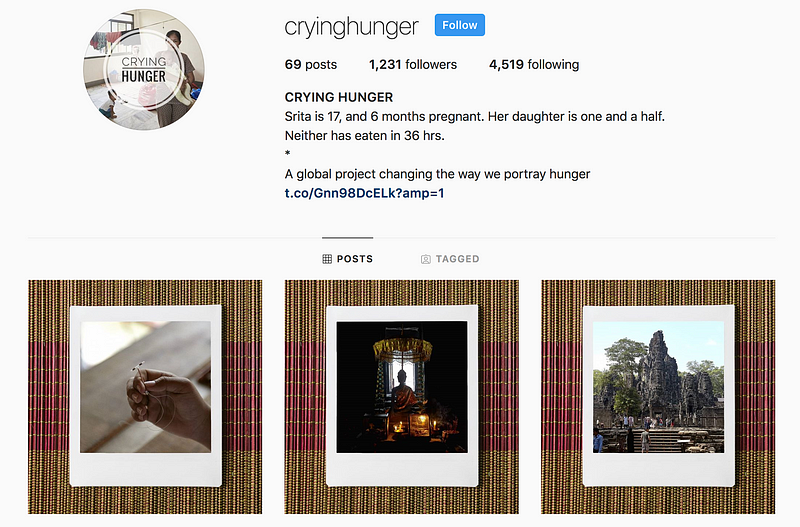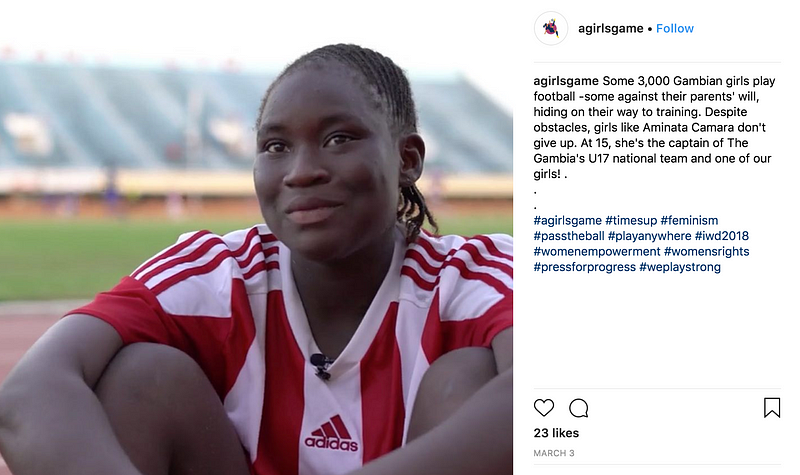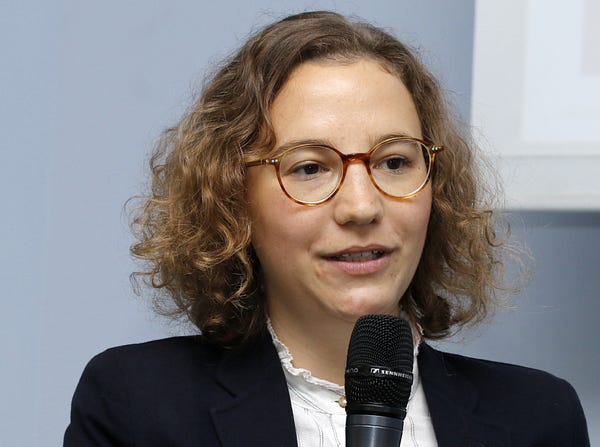
Journalists excel at finding and leveraging stories, yet the idea of promoting their projects might seem strange to many. Still, having a strategy for reaching readers through social media and other channels can bring many benefits that you should not take for granted.
But where to start? What are the best channels to use and what are the pitfalls you want to avoid?
We sat down with Ben Whitelaw, engagement lead for the Engaged Journalism Accelerator, and Noémie Buffault, digital strategy consultant for public institutions, media and NGOs, to find out what essentials to keep in mind when it comes to promoting your reporting project online.
Firstly, why should journalists care about creating a buzz on social media?
Ben: Each and every story a journalist writes has the potential to capture people’s imagination, initiate discussion and make them think or feel something new. Stories, whatever form they take, are starting points for social interaction. So it makes sense to think about how people find your stories online via social media and how they, in turn, can use social media to discuss your story in their own corners of the web. It’s for everyone’s benefit.
Where’s best to start to reach the right audience for the story?
Ben: The first step is to ask yourself what impact you want your story to have. Why are you telling this story, as opposed to any other story? What do you want the outcome to be? What does success look like? The answers to these will shape how you find people who care about your story and the tools, platforms and mediums you need to start a conversation about your project.
Noémie: First of all, start following people that are important for your topic and that you want to be followed by. Engage with them — like their posts, answer their questions, participate in the conversation.
Next, map out the multipliers who could give some echo to your story and who are in touch with the audience you’re aiming at. They can help you to share your content, spread it with their network. It can be important to follow people from the countries where you’re reporting from, and people within the same sector.
What are the most appropriate platforms to use?
Noémie: It depends on the purpose, but also on the “content material” you have. If your story relies on high quality pictures, for example, it’s a good idea to post them on Instagram. If you have produced short subtitled videos, Facebook might be the right place to post them. For live coverage, Twitter could be relevant too. And don’t forget LinkedIn when it comes to reaching out to policy makers or CEOs.

“Crying hunger” by Corinne Redfern is a multimedia project where Instagram is used to tell stories with powerful images.
On a practical level, what do I need to do on social media before, during and after the reporting project?
Noémie: If you’re working with a traditional news organisation, meet with the social media manager or marketing team. Run your ideas by them, discuss the communications strategy. Analyse your audience: where are they active? What are their interests? What are they sharing?
Also, this is the time to map out the organisations that can help you reach your audience. Explore if there are Facebook groups or pages that can be helpful. Who are the Reddit moderators of your topic’s subreddit? Are there YouTubers relevant to the field of your project?
During the reporting, look for ways to bring the reader along and get them invested in your story while you’re working on it. Think about creating a newsletter or a video diary of your reporting project. Sharing behind the scenes pictures is a good idea as long as it doesn’t jeopardise your safety and your story.
At the end, promote your story on your personal social media accounts and on the media outlet’s social media channels. Engage with your readers, ask them if they read your story and what they thought about it. Ask them what you should focus on in the future. And repeat the whole process again.
What’s an effective way to spark conversations on social media around your reporting project?
Ben: Being timely is important. Work out if there’s a relevant event or anniversary that you can publish your project alongside so that it has the chance of being picked up. Be strategic in your approach — think about the day of the week, time of day and what else is happening in the space.
Also, don’t hesitate to re-promote your story if something comes into the news that makes it relevant again. All of this will help you to cut through the noise of thousands of other outlets and stories.
Noémie: My key tip is — write as you speak. Make your content short, visual and engaging. Remember to ask questions and answer the ones asked by your audience. And most importantly, don’t over-sell your story. Don’t take the risk of disappointing your audience. Rather ensure you build a trust relationship with them.
And what are the best ways to attract the attention of influential stakeholders and organisations?
Noémie: On Twitter, you can make a public list of potential audience or multipliers. This way, they’ll be notified when added to the list, and it will draw their attention towards you. But while social media is crucial, don’t forget real life connections! After you’ve met a person, follow them on Twitter, add them on LinkedIn and keep the relationship going.
Ben: Indeed, meeting people offline is almost always the best way to get them and the organisations they represent on board because they’ll see the passion you have for your story.
By inviting to a face-to-face meeting, you’re telling them that this is important and that they should take it and you seriously. Once the project is in flight, a newsletter can be a great way to update a wider group on the progress of your story.
What free online tools would you recommend to make the online communication efforts easier?
Noémie: Tweetdeck is a dashboard that refreshes automatically. It’s useful to follow a specific list of users, and to stay updated with what’s happening right now. Buffer can help you schedule and post your content at the most relevant times. Canva is useful for choosing pictures that are immediately suited for social media.
Additionally, Bit.ly or any URL shortener would give you access to some key figures, telling you how your story performed in term of clicks. You can use it to see where people who clicked on your link came from (Google, social media, news homepage).
And are there things journalists should avoid doing on social media?
Ben: Don’t think you have to be on every platform or posting at all times. Social media can be an easy way to waste time and effort without much effect. Be strategic in your approach. Remember that different channels have different strengths and weaknesses. You might even realise social media is actually not the best way to communicate to the audience you want to reach.
Noémie: Firstly, don’t be afraid of self-promotion, this is not about flattering your ego, but about promoting your work. And don’t use social media only for promotion, be an observer. Take a look at who has talked or written about your topic before. What type of reporting has been done on this until now? It should be a part of your research that will help you to connect better with the existing community.
Reuter’s Digital News Report shows that recently there has been a decline in usage of social media for news. At the same time, messaging apps like WhatsApp and Snapchat continue to be popular. What’s your advice for journalists who want to use these channels to promote their projects?
Ben: The rise of messaging apps suggests that people are more conscious about what they share publicly and increasingly happy when in semi-public, invite-only communities. So if your project is about a sensitive subject, create the space where they can discuss it in front of people they are comfortable with.
Also, I’d like to see more journalists use channels like WhatsApp and Messenger to get feedback from their audience in the early stages of a story. That would help to avoid mistakes in tone or content and make the final project stronger.
How do you measure the success of your social media efforts?
Noémie: Facebook, Twitter, LinkedIn and Instagram have their own free analytics tools that can help you monitor who has seen your post and how people engage (or not) with it. No need to look up complex data, just make sure to compare your audience score of one story with the score of another.
Ben: Indeed, don’t worry about social metrics too much — they’re mostly indicative metrics that can be skewed easily and don’t tell you a great deal about your success. Measure yourself against the impact you set out to have at the start.
Did you reach the audience you intended? Did you tell them something they didn’t know or which changed their minds? Did they take an action? Those kind of outcomes can be tough to attribute but are much more powerful than likes or views.
What are some great examples of journalists promoting their projects on social media?
Noémie: Many of the EJC’s Journalism Grants grantees make great use of social media, for example, “Crying hunger” by Corinne Redfern and “A girl’s game” by Mariangela Maturi, Irene Caselli and Claudia Jardim are great examples of using Instagram to showcase and amplify your reporting project.

The project “A girl’s game” tells it’s story through an Instagram account.
Ben: Eliza Mackintosh and her work on the #AsEquals project really caught my eye for its visual nature and eye-catching graphics. She thought early on about how very powerful stories could translate to other platforms, like Twitter, and was careful not to reduce their seriousness in the process. The impact the campaign has had proves that this is an exceptional case worth taking example of.
Opinions expressed on this website are those of the authors alone and do not necessarily reflect or represent the views, policies or positions of the EJO.
Sign up for the EJO’s regular monthly newsletter or follow us on Facebook and Twitter.
Tags: audience, audience reach, buzz, Facebook, Google, Instagram, LinkedIn, online buzz, readers, reporting, SEO, Snapchat, Social media, Twitter














































